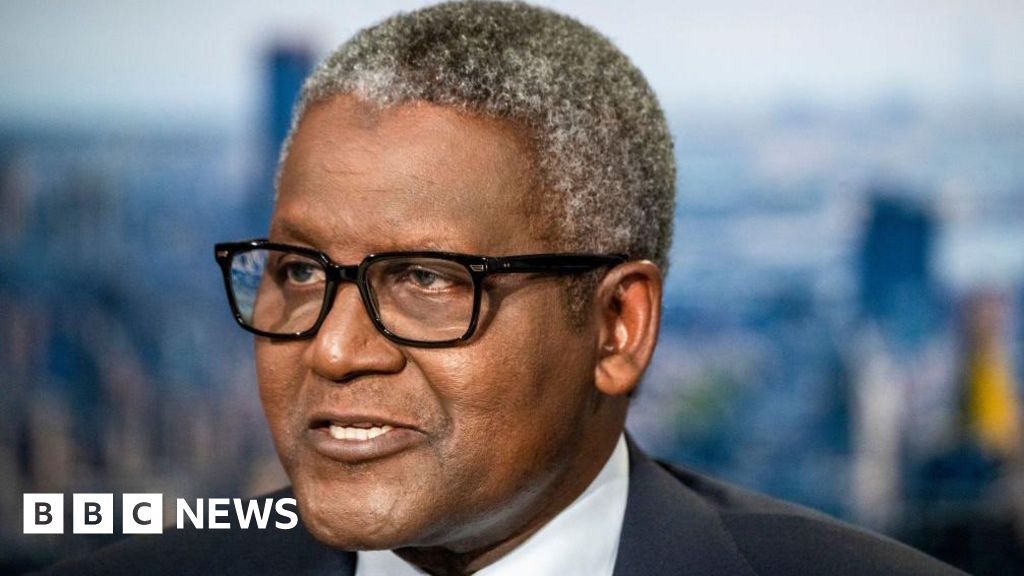ARTICLE AD BOX
 Image source, Photo courtesy Surbhi Gupta
Image source, Photo courtesy Surbhi Gupta
"It felt like a break-up," says former Meta engineer Surbhi Gupta
Layoffs across the tech industry, including at firms like Twitter, Meta and Amazon, have affected a significant number of Indians working in the US who are on visas like the H-1B. California-based journalist Savita Patel speaks to workers who are facing the prospect of being forced to return to India if they don't find another job.
Surbhi Gupta, an Indian engineer working in the US since 2009, was surprised that she was laid off by Meta this month. "I was performing well at work," she says.
On 9 November, Meta, which owns Facebook, Instagram and WhatsApp, announced it would cut 13% of its workforce - the first mass lay-offs in the firm's history which resulted in 11,000 employees losing their jobs.
"None of us slept that night," Ms Gupta says. "At 6am, I got the email. I couldn't access my computer, nor the office gym. It felt like a break-up."
Ms Gupta is likely to be a familiar face for Indians. Winner of the 2018 Miss Bharat-California contest, she was featured most recently in the Netflix show Indian Matchmaking.
Now she is among thousands of educated and skilled immigrant workers fired by US tech companies this month.
Most of them work in the US because of the HI-B visa. It's a non-immigrant visa that allows firms to employ foreigners for up to six years in positions for which they have been unable to find American employees.
It also allows holders to apply for permanent residency in the US and buy property in the country.
Ms Gupta says she worked very hard to build a life in the US for "over 15 years".
Her visa now hinges on finding her next job.
Worldwide, more than 120,000 tech workers have lost jobs as a result of cutbacks by US tech companies, according to the Layoffs.fyi website, which tracks tech job cuts.
While companies have not released India-specific numbers, San Jose-based immigration attorney Swati Khandelwa says "it's hurt the Indian community particularly hard."
Image source, Photo courtesy Naman Kapoor
Image caption,Naman Kapoor says he was laid off just seven weeks after he was hired by Meta
"We saw an uptick in calls for consultation," she says. "Everybody is anxious, even those who have not been laid off fear that they might be [fired] later."
For Indian tech workers, the layoffs do not just mean seeking new employment but also finding employers who are willing help them continue with their work and pay for the associated legal costs.
"If a new employer is unable to transfer your visa petition in 60 days, the remedy is for people to leave [the US] and re-enter for work after the paperwork is complete," Ms Khandelwal says.
"But the practical aspect is that people will get stuck in India as there are not many visa stamping appointments available in consulates," she says.
Wait times for a visa appointment at US consulates in India have reached 800 days in some cases.
This is why the layoffs have come as an unwelcome surprise for Indian workers.
Sowmya Iyer, a lead product designer at the ride-sharing app Lyft, says she was part of a team that "had internally taken steps to maintain the fiscal health of the company".
But Ms Iyer found herself among hundreds who were laid off at the company this month. "We had not expected it to hit us," she says.
The mass layoffs feel like a "tech pandemic," she explains. "Both my friend and his wife lost their jobs on the same day. Everyone is in the same boat - reaching out, exchanging condolences."
Image source, Getty Images
Image caption,Meta's mass lay-off resulted in 11,000 employees losing their jobs
Ms Iyer says she has student loans to pay back and hasn't told her parents back home in the western Indian state of Gujarat about her layoff.
In the US on an O-1 visa - granted to individuals with "extraordinary ability and achievement" - Ms Iyer says she is confident of finding work.
Her resume lists degrees from prestigious design schools in India and the US and the O-1 visa allows her to stay on for 60 days after the termination of any job.
America's WARN (Worker Adjustment and Retraining Notification) Act offers a buffer before the 60-day visa clock starts. WARN requires employers to give a 60-day notice to the affected employees during a mass layoff.
"To ensure my status here and help me find an employer, my former employers have given me a month's notice, so currently I have three months," she says.
But for many Indians, even 90 days is a tight timeline and has upended plans they had. Many have families to support, others have thousands of dollars in loans to pay off.
Naman Kapoor had borrowed money to pay for his masters programme at New York University.
He was hired as an engineer by Meta after multiple rounds of interview only to be laid off seven weeks later. "I got the termination email at 8am [local time] on 9 November," he says.
"The whole idea is that a US education includes work experience," he says. "It is very expensive to study in New York. I worked to support my living expenses."
Mr Kapoor is in the US on an F-1 (OPT) visa which allows him only 90 days of unemployment during his stay in country.
"Meta offered me four months of pay as severance," Mr Kapoor explains. "But I have just three months within which I must find my next job or go back!"
Image source, Photo courtesy Surbhi Gupta
Image caption,Surbhi Gupta says worked very hard to build a life in the US "over 15 years".
Finding a new job in this environment will be tough, Ms Gupta says. "It's almost December - hiring will be slow because of the holidays."
In the wake of the layoffs, Ms Khandelwal says a community has formed to support people in crisis. Colleagues and employers have been spreading information and offering referrals for prospects online.
"I created Zeno, [a platform] to help the impacted (workers) find jobs," says Abhishek Gutgutia, a tech worker based in the Bay Area. "It has seen 15,000 visits so far."
Mr Gutgutia says his LinkedIn post on Zeno has nearly 600,000 views. "About 100 candidates, 25 companies and 30 mentors have signed up. Several immigration attorneys have also volunteered [their services]."
Vidya Srinivasan, a Meta employee, says she saw a "heart-warming outpouring of support from Meta-mates" in her efforts to put together a "Meta Alumni guide" for those whose lives changed overnight. Her online posts were seen by over a million people, she says.
Amid such hopes, Indian immigrant workers remain on tenterhooks until they land their next job.
"I am tired of being tested," Ms Gupta says. "How much stronger should I be?".

 1 year ago
20
1 year ago
20








 English (US)
English (US)